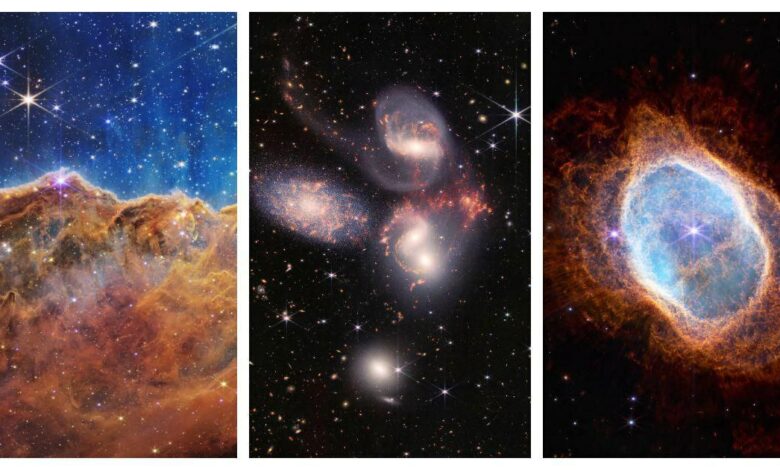NASA unveils more Web Telescope images of universe

Hours after people around the world got a glimpse of “the deepest, sharpest infrared view of the universe” ever taken, the United States space agency has released other detailed photographs taken by the James Webb Space Telescope.NASA said the images from Webb, a joint collaboration with the European and Canadian space agencies and the world’s largest and most powerful space telescope, have ushered in “the dawn of a new era in astronomy”. of the photos released on Tuesday morning showed a cloud of dust and rays of light surrounding a dying star known as the Southern Ring Nebula, located approximately 2,500 light-years from Earth, while another offered a glimpse of a galaxy cluster called Stephan’s Quintet.“The dimmer star at the center of this scene has been sending out rings of gas and dust for thousands of years in all directions,” the agency said about the Southern Ring Nebula photo, adding that Webb “has revealed for the first time that this star is cloaked in dust”.“New details like these, from the late stages of a star’s life, will help us better understand how stars evolve and transform their environments,” NASA said.The $9.7bn Webb observatory was designed to peer through the cosmos to the dawn of the known universe, ushering in a revolutionary era of astronomical discovery.The first batch of full-colour, high-resolution pictures, which took weeks to render from raw telescope data, were selected by NASA to provide compelling early images from Webb’s key areas of inquiry and a preview of science missions ahead.The Webb Telescope set out from French Guiana on South America’s northeastern coast on December 25, 2021, before reaching its final destination 1.6 million kilometres (one million miles) from Earth less than a month later.Once there, Webb underwent a six-month process of unfurling its various components, aligning its mirrors and calibrating instruments – and more discoveries are expected to be unveiled over the coming weeks.Whoops and hollers from a spritely James Webb “cheer team” welcomed some 300 scientists, telescope engineers, politicians and senior officials from NASA and its international partners into a packed and lively auditorium ahead of opening remarks on Tuesday.The “deep field” image released during a brief White House event on Monday evening is filled with lots of stars, with enormous galaxies in the foreground and faint and extremely distant galaxies peeking through here and there.Part of the image is light from not too long after the Big Bang, which was 13.8 billion years ago.“What we saw today is the early universe,” Harvard astronomer Dimitar Sasselov told The Associated Press news agency after the reveal.Built to view its subjects chiefly in the infrared spectrum, Webb is about 100 times more sensitive than its 30-year-old predecessor, the Hubble Space Telescope, which operates mainly at optical and ultraviolet wavelengths.The much larger light-collecting surface of Webb’s primary mirror – an array of 18 hexagonal segments of gold-coated beryllium metal – enables it to observe objects at greater distances, thus further back in time, than Hubble or any other telescope.One of the other images released on Tuesday revealed a “landscape of ‘mountains’ and ‘valleys’ speckled with glittering stars” in what’s known as the Carina Nebula, which is located about seven light-years away.Another “captured the distinct signature of water, along with evidence for clouds and haze, in the atmosphere surrounding a hot, puffy gas giant planet orbiting a distant Sun-like star”.





